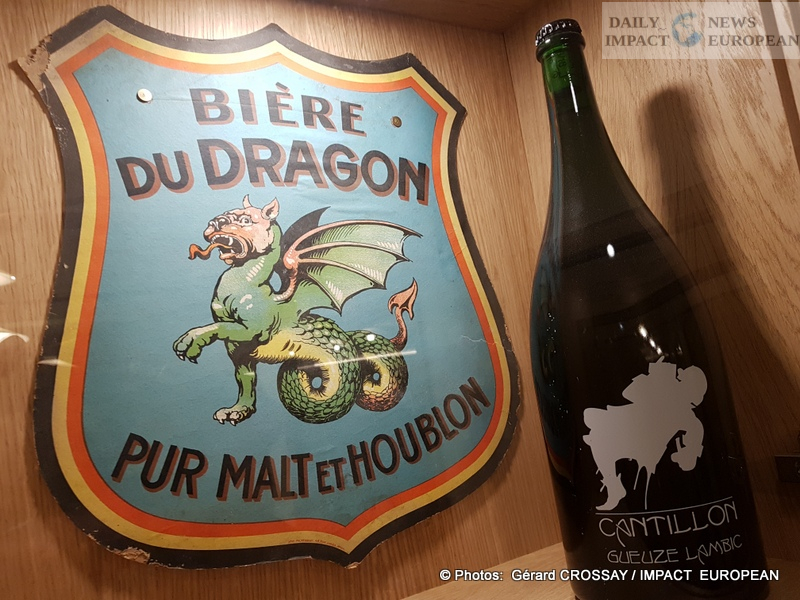It is the last craft brewery in the Belgian capital to produce traditional lambic, gueuze and kriek.
Founded in 1900 by Paul Cantillon, this family business has remained completely independent.
At the start of the 20th century, each district still had its own brewery supplying the neighboring taverns.
In the early 1970s, small family breweries were closing one after the other in favor of industrial production companies.
The real lambic, the basis of gueuze, is disappearing, replaced by beers of lesser character, sweeter, less bitter, and easier to produce in large quantities.
It was then that Jean-Pierre Van Roy, spouse of the founder’s granddaughter, took over and managed to turn the company around by betting on returning to traditional production methods. Successful bet !
Beer appears with the first cereal crops, around 6000 BC. JC.
During excavations on the site of Nineveh (current Iraq), we found mention of a beer, Sikaru, the first beer known in the world (3600 BC).
At that time, the manufacturing process was empirical.
The wild yeasts in the ambient air sowed the must, a sweet extract of wheat and malted barley, and started the alcoholic fermentation.
The ancestral natural fermentation has gradually disappeared in favor of fermentations controlled by the brewer.
The Cantillon Brewery continues the tradition.
Wheat and barley are crushed in a crusher. The grind obtained is mixed with hot water to extract the sugars. Before it is brought to the boil for several hours, we add the old-fashioned hop flower (3 years old), used for its aromatic essences.
The penultimate stage is the cooling tank, a huge red copper tank in which the sterilized must will cool slowly while being fertilized by bacteria and yeasts, natural ferments.
Last step, oak or chestnut barrels. The cooled must is sent to these 500 L barrels.
A « spontaneous fermentation » begins after a few days and will continue for at least 3 years.
We thus obtain the « lambic ».
It is not the color, the appearance or the taste that defines a beer, but its type of fermentation.
For « low » or « high » fermentation, no passage in barrels.
To make the « gueuze », the Master Brewer mixes lambics from 1 to 3 years old, carefully selected.
After bottling and storage in cellars, champagnisation takes place after 6 months.
A minimum of 3 years of age is required, but such a traditional gueuze can age beyond 25 years!
The « kriek » is a maceration of cherries in lambic. We also make blends with raspberries, grapes or apricots.
The Cantillon Brewery has of course a very wide range of products, Faro, Iris, Mamouche, Fou’foune …
Its production, of very high quality, remains confidential. 2,500 hectoliters per year against 18 million for the whole of Belgium.
Created in 1978 within the Cantillon brewery, the Brussels Gueuze Museum aims to promote and safeguard a method of fermentation that is unique in the world. Beers, tools, machines, copper vats, barrels, some more than a hundred years old, and the manufacturing process are from the time and constitute a precious heritage.
Guided tours, tasting … internationally renowned, the museum receives nearly 30,000 visitors per year.
























Plus d'histoires
Private Health Schools Under Scrutiny: Council of State Sides with the French Order of Physiotherapists
Dordogne: Mayor Excluded for Antisemitism Avoids Trial, LICRA Reacts
Berlin, Strategic Crossroads: Ukraine, European Security, and the Peace Economy